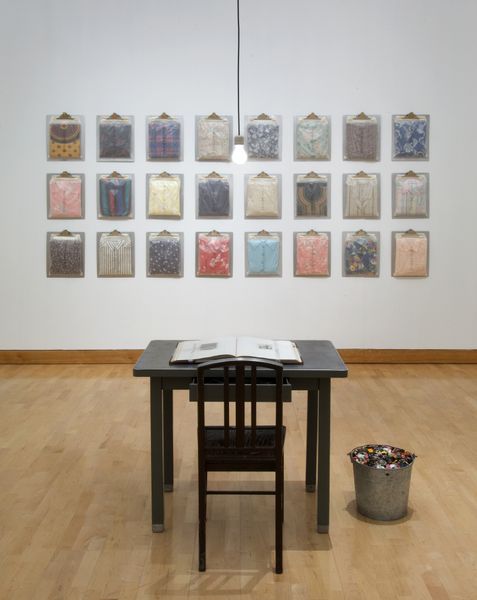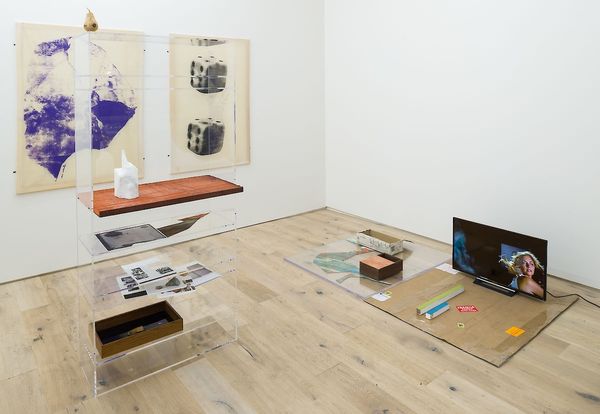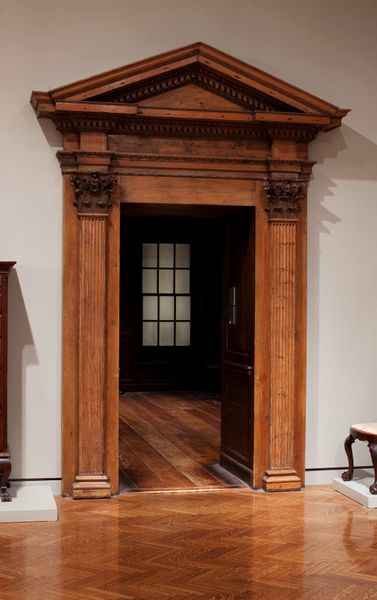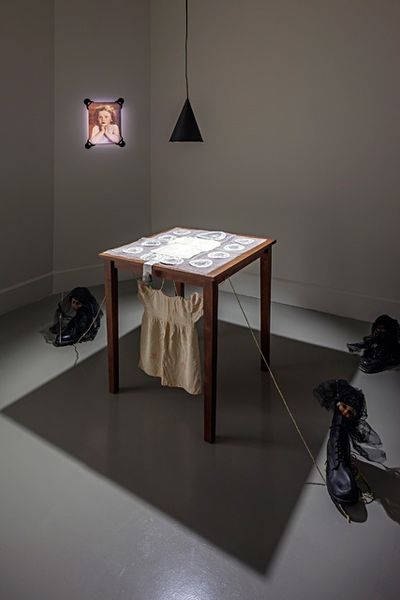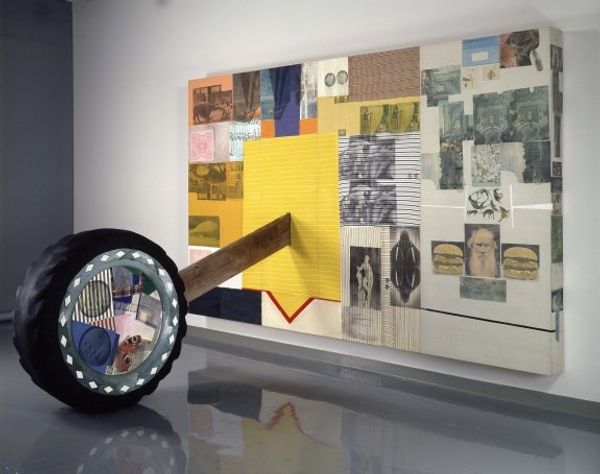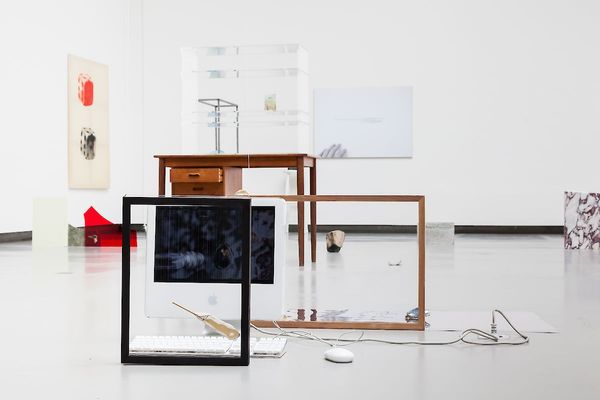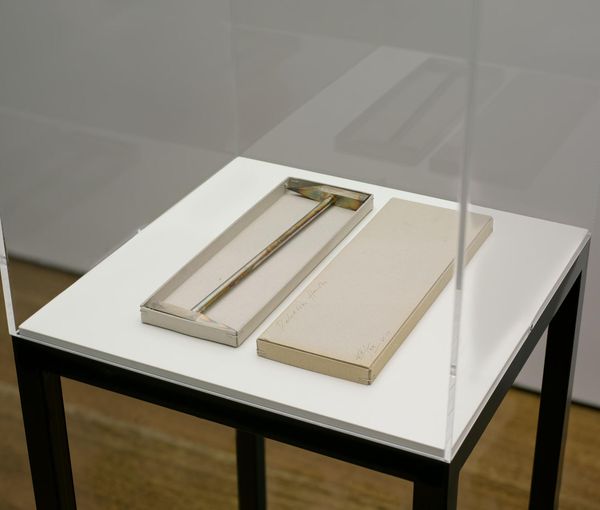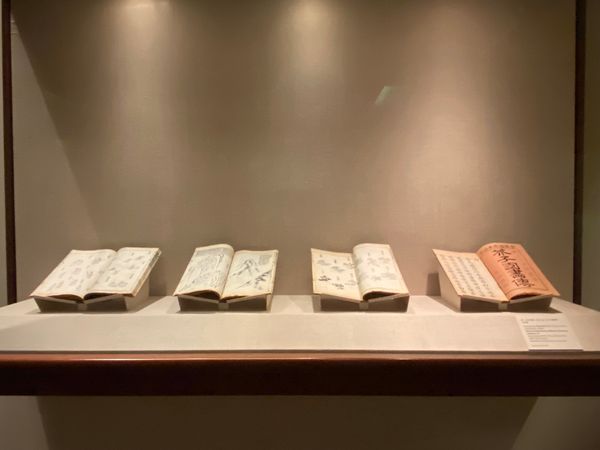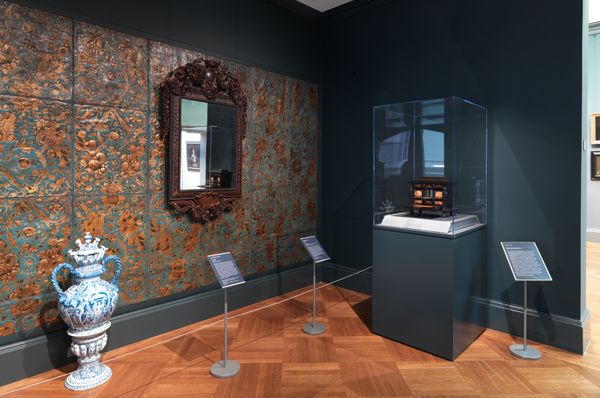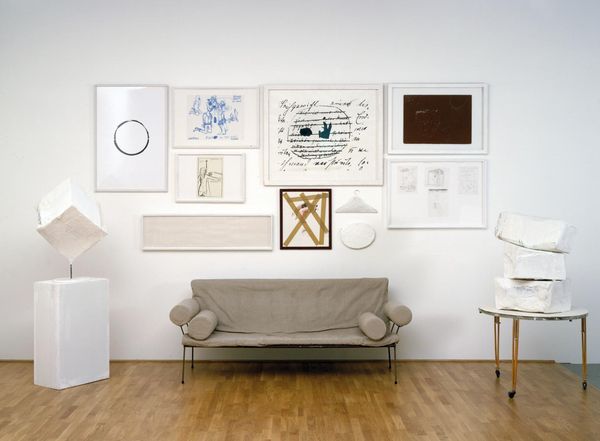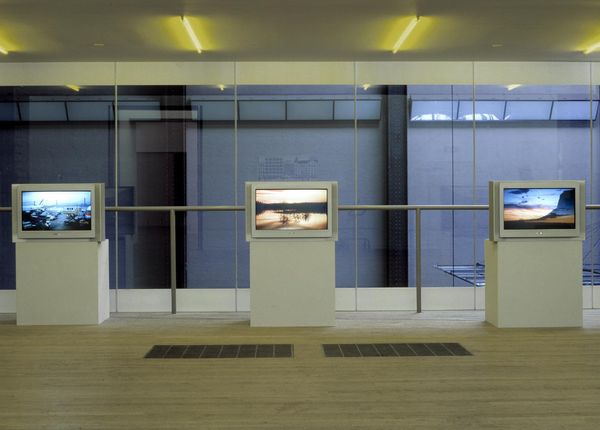
photography, sculpture, installation-art
#
portrait
#
conceptual-art
#
photography
#
sculpture
#
installation-art
Dimensions: height (cabinet, without lamp): 45 in. (114.3 cm) height (with lamp): 62 in. (157.48 cm) width: 69.22 cm (27 1/4 in.) depth: 64.14 cm (25 1/4 in.)
Copyright: National Gallery of Art: CC0 1.0
Editor: So, this is Deborah Luster's "One Big Self: Prisoners of Louisiana," created between 1998 and 2002. It's quite a haunting installation, with those vintage-looking portraits and this... almost altar-like structure. What strikes you about it? Curator: It is an altar of sorts, isn't it? Think about what portraiture traditionally signifies. Commemoration. Legacy. Here, those concepts are refracted through the lens of incarceration. The images, displayed like relics or votive offerings, evoke a powerful tension between individual identity and societal judgment. What do you make of the specific photographic process employed, the tintype? Editor: It makes them feel… distant. Almost ghostly, you know? Less about the person, more about an idea of a prisoner. Does that make sense? Curator: Absolutely. The tintype, with its alchemical process and inherent imperfections, becomes a potent metaphor. The images, born of light and chemistry, capture not just a likeness, but also a kind of spectral presence. Are they portraits of individuals, or symbols of a broken system? Editor: That makes the title click – “One Big Self”. Are we, the viewers, implicated somehow in their collective fate? Curator: Precisely. The installation challenges us to confront the symbols of crime and punishment, and our own roles in perpetuating or dismantling them. Consider the cultural baggage we attach to images of incarcerated individuals and how Luster subverts expectations. Does she offer redemption? Judgment? Or simply, witness? Editor: Wow. I initially just saw a sad display of mugshots, but there is so much more embedded in the artwork’s cultural symbolism. Thank you. Curator: It's in recognizing those embedded stories, in deciphering the iconography of our shared human experience, that we truly connect with the artwork. The symbols allow a continuous engagement and re-interpretation over time, creating a living dialogue across generations.
Comments
No comments
Be the first to comment and join the conversation on the ultimate creative platform.
